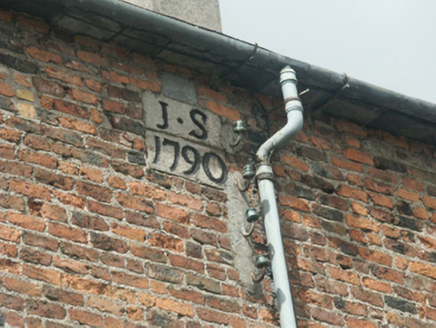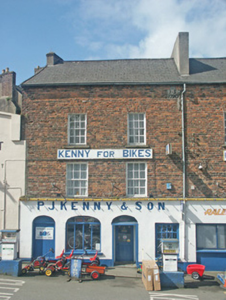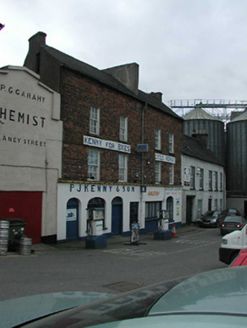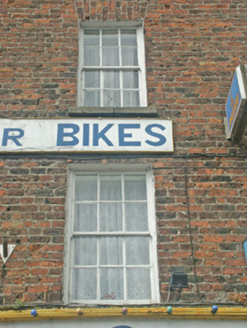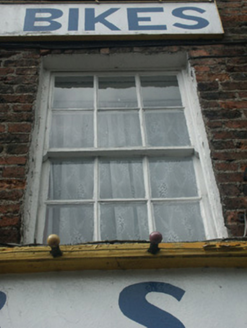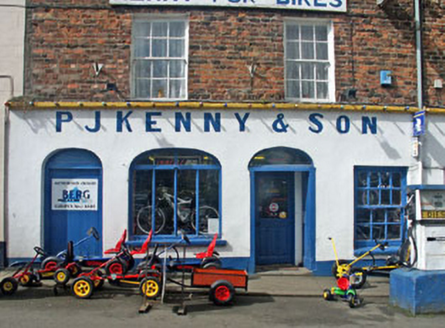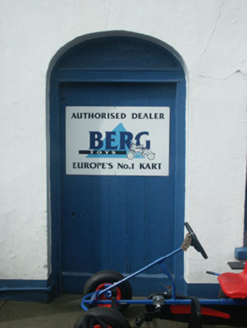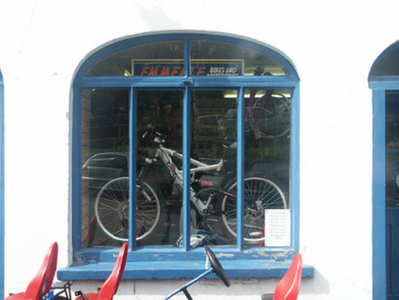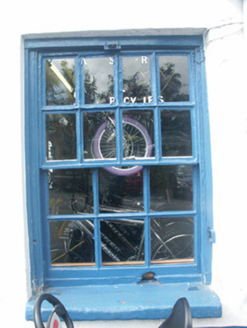Survey Data
Reg No
15603129
Rating
Regional
Categories of Special Interest
Architectural, Artistic
Original Use
House
In Use As
House
Date
1785 - 1795
Coordinates
297320, 139899
Date Recorded
13/06/2005
Date Updated
--/--/--
Description
Terraced two-bay three-storey house with half-dormer attic, dated 1790, with shopfront to ground floor. Reroofed, c.1975. One of a pair. Pitched (shared) roof with replacement fibre-cement slate, c.1975, clay ridge tiles, fine roughcast or rendered chimney stacks, rendered coping, and cast-iron rainwater goods on overhanging stone-flagged eaves having iron brackets. Red brick irregular bond walls with shared cut-granite date stone/plaque to top floor. Square-headed window openings with cut-granite sills forming sill course to first floor, red brick voussoirs, and six-over-six timber sash windows. Rendered 'Enniscorthy shopfront' to ground floor with series of elliptical-headed openings (one square-headed window opening to right), fixed-pane (four-light) timber display window having overlight, timber boarded or timber panelled doors on cut-granite steps having overlights (one leading to glazed timber panelled internal door; eight-over-six timber sash window to square-headed opening), and cut-granite cornice (sill course). Interior with timber panelled shutters to window openings. Street fronted in hollow [DS].
Appraisal
A house of the middle size purpose-built as one of an identical pair (with 15603128) by a now-unknown patron ("J.S.") probably having connections with the Sparrow family of nearby Blackstoops House accommodating commercial and residential spaces in a wholly-integrated composition featuring a characteristic so-called 'Enniscorthy shopfront' incorporating elegantly-swept openings in an almost symmetrical pattern. Having been well maintained, the house presents an early aspect with the pleasing composition attributes prevailing including the distinctive construction in early red brick, the Classical proportions retaining early fittings, and so on, thus maintaining the status as an important element of the late eighteenth-century built heritage of Enniscorthy.
